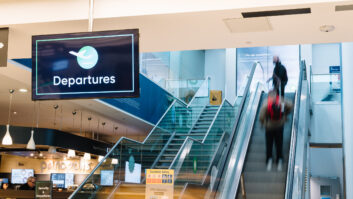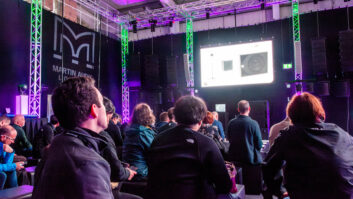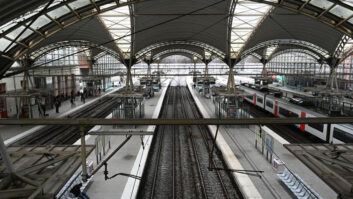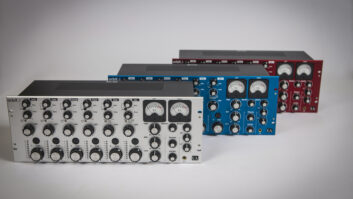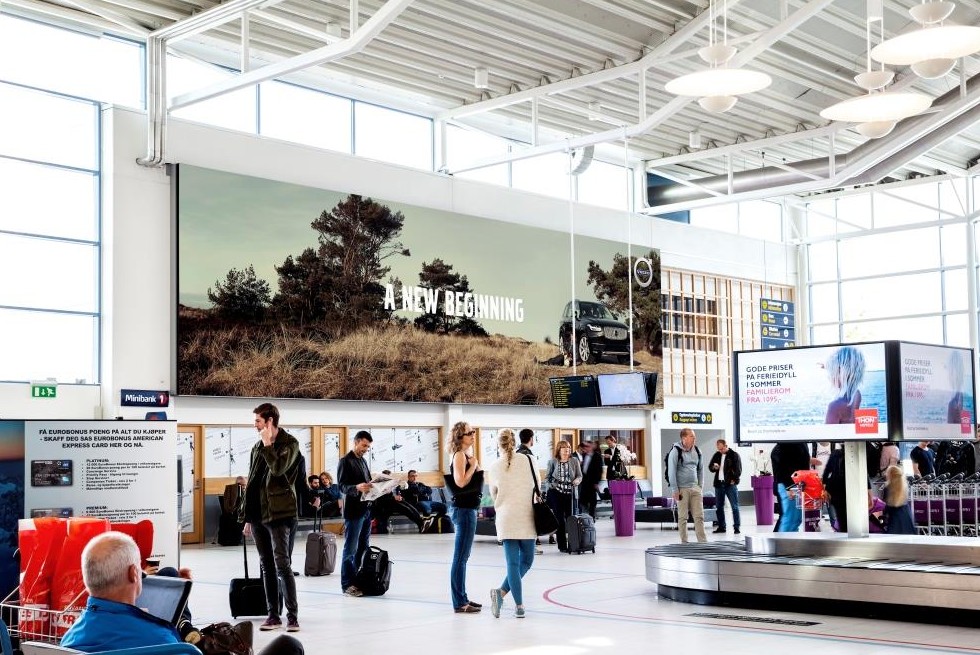
In the first part of this feature we looked at the developments in display technology making high-resolution screens increasingly prevalent in transport hubs. We conclude by detailing the advances being made in audio such as audio over IP, writes David Davies.
The use of beam-oriented technologies, often delivered from compact, aesthetically discreet loudspeakers, is perhaps the most obvious example of audio improvement in airports and railway stations. But behind the scenes, the move towards IP has also been making a significant impact.
Mark Ullrich, international sales manager at DSP specialist Symetrix, observes: “The advent of audio over IP has allowed centralised audio routing, processing, messaging, control and diagnostics on a greater scale and with greater flexibility. It has also made general system management easier in instances where the infrastructure is spread over large distances as with many rail projects. Cost effective, low-latency audio over IP has driven the growth in this segment.”
Domenico Gambino, VP sales at Barix, whose transport-friendly range includes the Annuncicom family of two-way IP audio intercom and paging devices, also highlights this transition. “The [IP world] brings all the benefits of the reuse of network infrastructure, easy scalability and the convergence of different functions into the same management system.”
The rise of IP-based workflows and increased integration with IT infrastructures has very obvious implications for the development of combined data centres that can feed multiple systems, encompassing audio and video. But how far are we down the road to truly integrated infrastructures – and what are the potential pitfalls?
Integrated instincts
As NEC Display Solutions Europe aviation business development manager EMEA Richard Wilks observes: “Data from more disparate systems is now being connected over IP”, with collaboration and data-sharing between departments “driving efficiency and adaptability”. As might be expected at this early stage of the transition, the results of this increased integration are manifesting themselves in different ways.
“Announcements are being co-ordinated with the visual display systems, [although at present] these systems are usually separate technology platforms,” says QSC director of installed systems product management TJ Adams. “We believe the future is creating flexible data-driven platforms with robust API interfaces that can easily integrate but do not necessarily need to be the same platform.”
Deeper software integration is the name of the game, and in this regard QSC continues to make an impact with its Q-Sys scalable audio solution – a good fit for transport applications thanks to its “extensive scripting control and software layer integration with third-party systems such as FIDS/MUFIDS, AODB and other automation drivers of our automatic message playback features”.
Harman is another manufacturer from an audio background to be exploring the opportunities presented by combined messaging techniques. Geared towards airports, transit stations and other public spaces, the IDX system is an audio and visual information delivery solution. Powered by ECLIPSX software and utilising a standard database server for straightforward information management, IDX supports a multilingual message library and features logging of captured events for auditing and live playback.
While important passenger information might be the primary driver of greater integration, it also has implications for the delivery of advertising and entertainment as part of what Gambino terms a “richer customer experience”. In this context, he is able to point to the Barix Audio Signage Solution, which is designed “to bring voice to the screen”.
He explains: “People can use their own mobile phones (iOS, Android) to wirelessly access the audio coming from a screen, whether digital signage for information or live TV for entertainment. While this concept is still in an early stage with limited deployment, it has clearly triggered enormous interest from system integrators and end customers.”
But it is clear that a merged approach can have its pitfalls if it is not deployed carefully, not least with regard to automated messaging. For example, one would want to avoid “repetitive audio [messaging] that is more accepted in the video format”, says Gambino.
Then there is the ‘latency’ that can occur between personnel inputting information and different building systems. “At times the computer is faster than the human operations,” says Adams. “A real-world example of this is where there was a requirement for the flight announcement system to automatically announce delayed and cancelled flights. However, the gate agent’s terminal systems were just a few minutes behind with the status updates, yet the flight announcement systems played back the cancellation message ahead of the agent’s knowledge. This resulted in many customers requesting re-accommodation before the agents knew the flight had been cancelled. Needless to say, there was some tweaking needed to accommodate the users so that they were empowered to respond to their customers in the appropriate order.”
On the right tracks
With the increased use of touchscreens to take into consideration as well – James Keen, marketing manager at Tripleplay notes the possibilities arising from the integration of Tripleplay onto Samsung SSP touchscreens for “wayfinding, promotion and information delivery” – it is clear that airport and railway station AV deployments are on track to become evermore elaborate.
The need to comply with changing security regulations – particularly in the airport environment – also commends a unified approach, even though it may be a few years yet before fully integrated systems can be regarded as the norm.
Case study: Absen flying high with Norwegian airport installs
In a project which neatly underlines the growing popularity of LED screens in transport facilities, Absen recently provided large-scale display solutions for three Norwegian airports: Stavanger, Bergen and Trondheim. The screens were installed on behalf of Scandinavian out-of-home advertising company Clear Channel Norway.
Utilising Absen’s AI03 3.9mm pixel pitch panels, a 57sqm screen was specified for the luggage arrival hall in Stavanger; a 20sqm screen was deployed in Bergen (Flesland) in the departure lounge; and a 7sqm screen was fitted in the luggage arrival zone in Trondheim. Content on each screen is run by a computer and a graphic card with four DVI outputs.
“The Stavanger installation in particular was a wish from CCN to install a high-resolution, high-impact screen for the end-user, in an attempt to satisfy and attract high-profile advertisers,” says Absen European managing director Ruben Rengel. “The 57sqm screen not only gives a great opportunity for advertisers to get their message across, it serves as a fantastic reference for CCN expertise in providing state-of-the-art digital signage solutions.”
Alongside image quality, the screens also deliver reliability through the use of Absen’s SNMP (single network management protocol) monitoring solution.
The monitoring protocol – which counts 3,500 digital assets in Norway (switches routers, internet connectors, panels, screens) – gives information about LED panel failure, heat emission, and other such panel statistics which are then sent to the CCN remote monitoring server.
“To be able to count on such a level of performance and reliability gives us peace of mind,” says Jonas Michael, head of digital development and operations at Clear Channel Norway.
